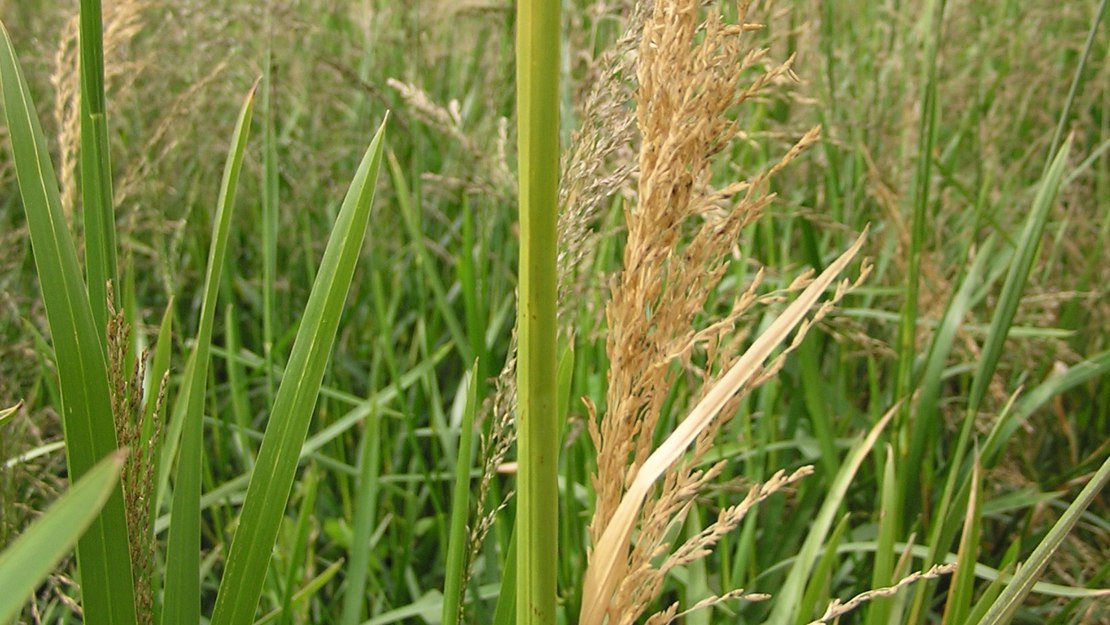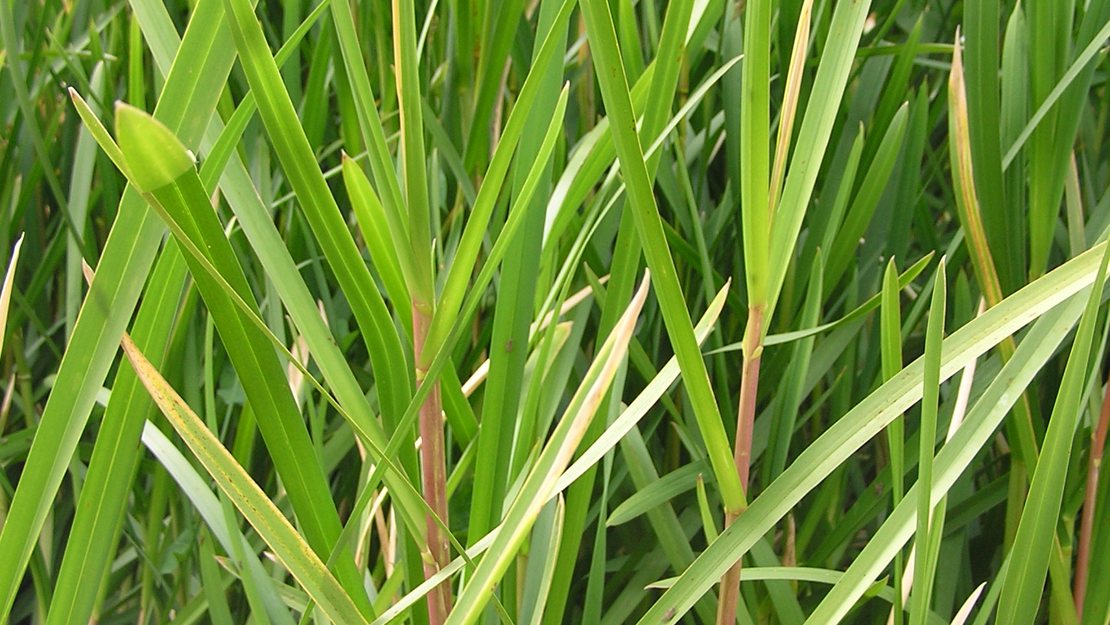Glyceria maxima
Reed sweet grass
Family: Poaceae
Origin: Europe

Regional Pest Management Plan (RPMP) status
- Aotea — Eradication
- Whole region — Sustained control
- Hauraki Gulf Controlled Area Notice pest
General description
Erect, clumping, perennial grass < 2 m tall. Rhizomes are creeping and can form mats that attach to a bank but float in deeper water. Leaves are < 2 cm wide. Flowers are yellow/green with a purple tinge and are borne in spikelets on branched flowerheads < 45 cm long during spring – summer. Seeds are small, dark brown and borne in summer – autumn.
What you need to know
To help protect our environment:
- You must not breed, distribute, release or sell reed sweet grass within the Auckland region.
- You must not plant reed sweet grass within the Auckland region.
- You must destroy any reed sweet grass on land that you occupy if it has been planted in breach of the above rules and you are directed to do so by an authorised person.
Auckland Council will control reed sweet grass at all sites within the Aotea/Great Barrier Island group where it is known to occur.
If you see reed sweet grass anywhere on Aotea/Great Barrier Island group, please report it to Auckland Council at pestfree@aucklandcouncil.govt.nz.
Habitats
Still and slow-moving eutrophic water bodies < 1.5 cm deep, wetlands, drains.
Dispersal
Seeds dispersed by water. Vegetative spread from rhizomes, dispersed by water. Human-mediated dispersal through movement of contaminated soil, machinery and equipment.
Impact on environment
Forms dense mats, trapping sediment, accumulating decomposing vegetation and altering stream morphology, dissolved oxygen levels and other biophysical properties.
Control
Site Management
Follow up treated areas 3 times per year. Encourage natural regeneration of native plants or replant treated areas where possible after 2-3 treatments to establish dense ground cover and minimise reinvasion.
Recommended approaches
Physical control
Method: Dig out or cover terrestrial sites with black plastic or weedmat for 6 to 12 months.
Plant parts requiring disposal: Seeds and rhizomes.
Disposal options: Remove to greenwaste or landfill.
Biocontrol
Biocontrol is currently not available for this species.
Community agrichemical control recommendations
No qualifications: Foliar spray in summer with 100ml glyphosate green per 10L of water.
Certified Handler/Experienced agrichemical user:
For infestations on terrestrial sites: foliar spray with 100ml glyphosate green per 10L of water and 20ml penetrant.
For infestations on terrestrial sites amongst desirable species: for infestations amongst desirable broadleaf species foliar spray with 50ml haloxyfop-P-methyl per 10L of water.
For infestations on aquatic sites: foliar spray with 100ml glyphosate green per 10L of water.
Caution: When using any herbicide or pesticide please read the label thoroughly to ensure that all instructions and safety requirements are followed.




